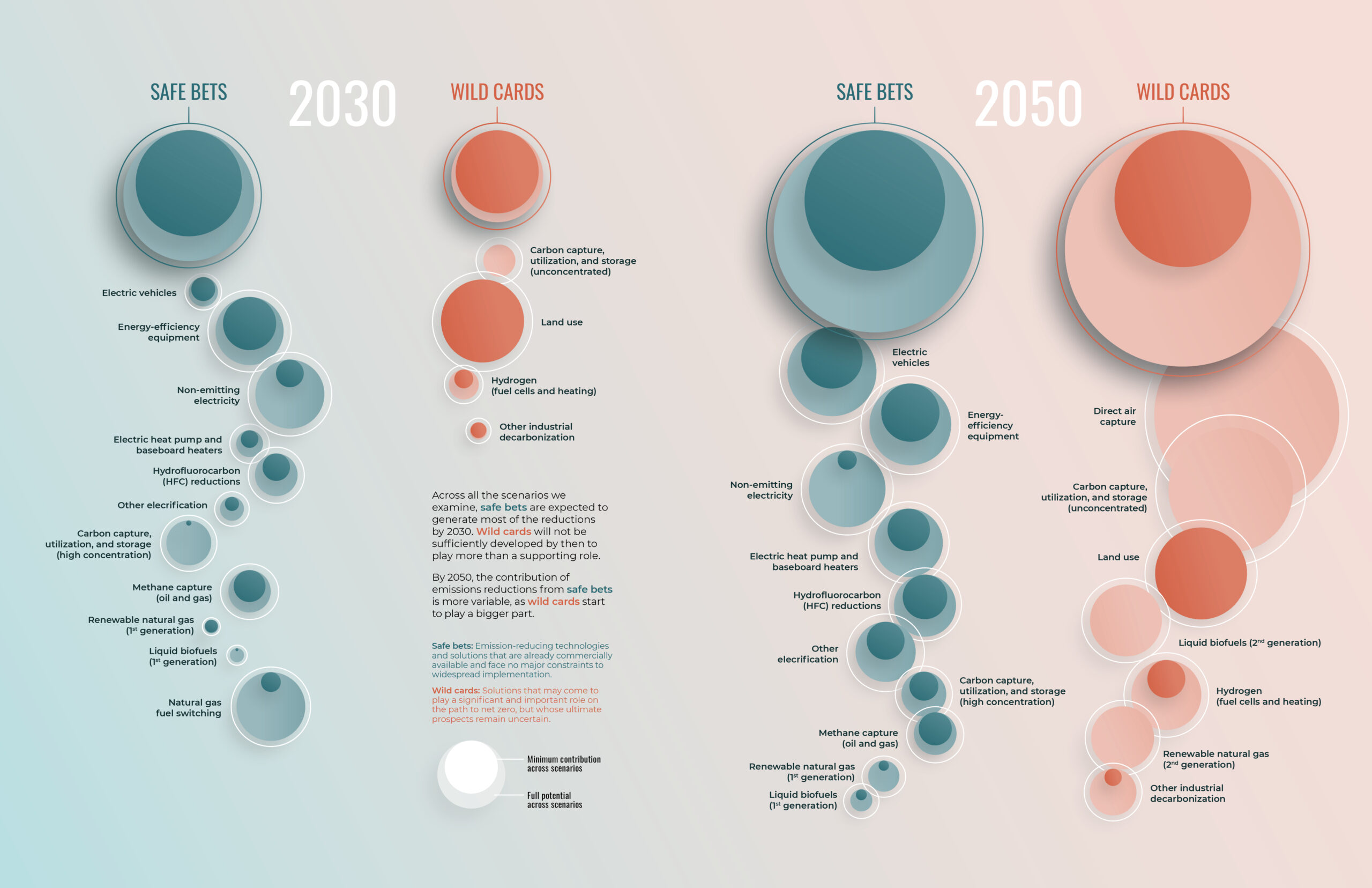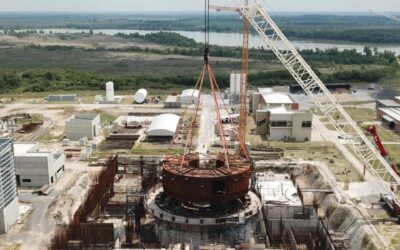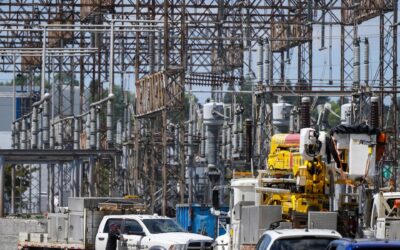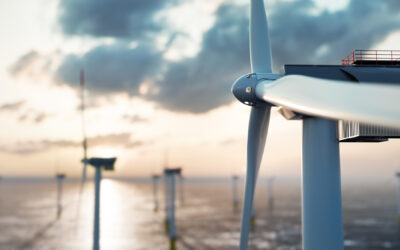What technology mix are critical for reaching net zero emissions?
Our Energy Transition Technology Profiles highlight some of the clean energy technologies that will play a role in Canada’s economic future and transition to net zero emissions.
We categorize each technology as either a safe bet or a wild card, based on how central each is likely to be to Canada’s energy transition.
Safe bets are technologies that are ready to be deployed at scale now, and that can get us most of the way to our climate goals.
Wild cards are early-stage technologies that could be big winners, but that face technological and/or financial barriers to viability. Not every wild card belongs in a winning hand, but we’ll need at least a few.
Each technology demands a different strategy for scaling up. Getting Canada to net zero means doubling down on implementing safe bets. It also means supporting the development of wild cards to see which become technically and commercially viable.
Why ‘safe bets’ and ‘wild cards’?
In Canada’s Net Zero Future, we analyzed over 60 possible scenarios in which Canada reaches net zero emissions by 2050. In this first-ever comprehensive analysis of net zero pathways for Canada, we identified different technologies that will make the transition possible.

Some technologies are ready to deploy today, which we call safe-bet technologies. These proven technologies can deliver at least two-thirds of the emissions reductions needed to reach Canada’s 2030 emissions target.
But that alone won’t be enough. To reach Canada’s long-term goal of net zero emissions, our modelling shows that wild-card technologies will also be critical. Wild cards are early-stage technologies that require supportive policy to drive their development and advancement, to see which become commercially viable. Over time, some wild-card technologies will prove themselves to be safe bets.
Related publications
Blogs














